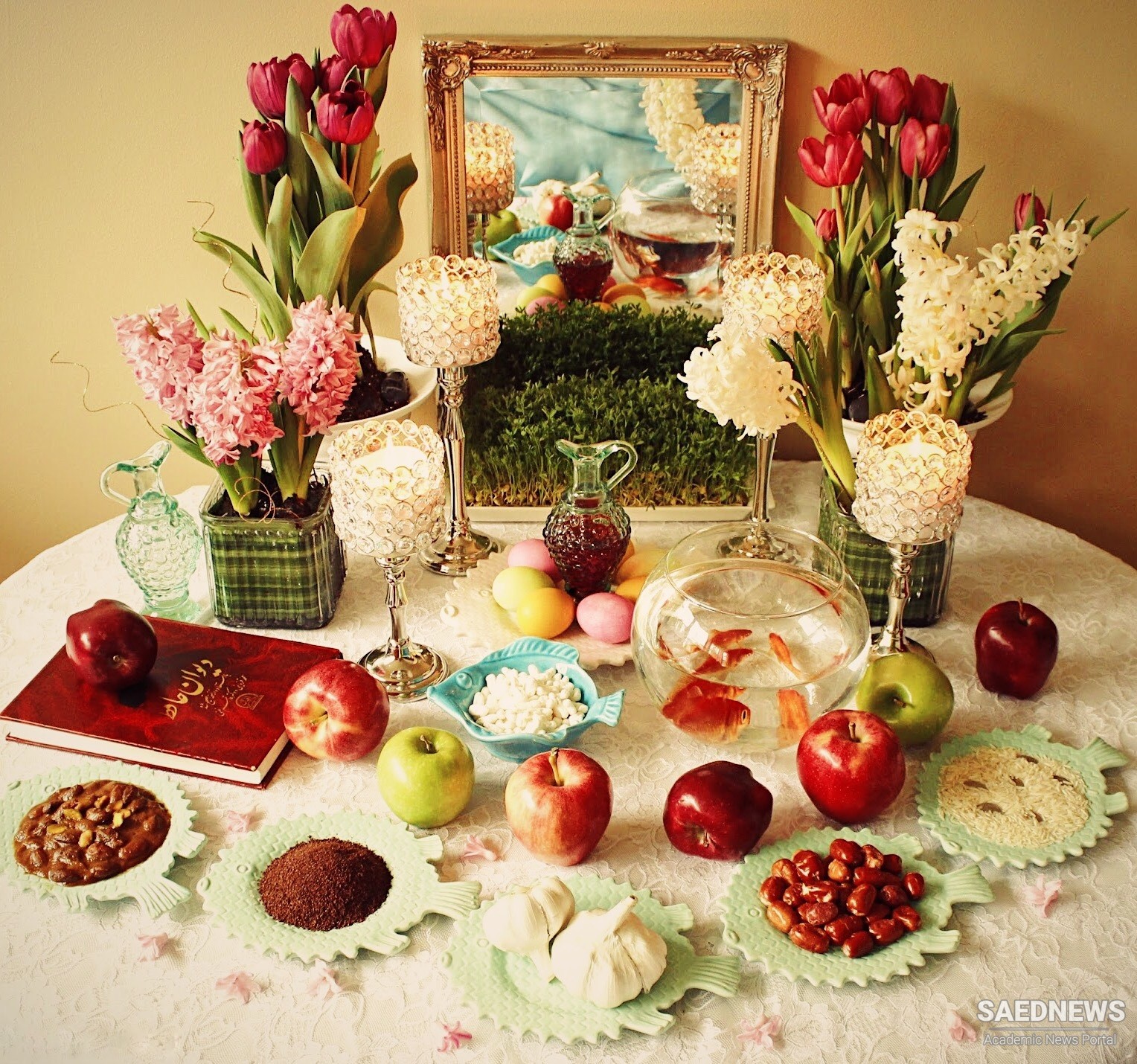The central event of the Nowruz holiday is the laying out of the sofreh, a special holiday tableau, on New Year’s Eve. Iranians take great pride in the preparation of the sofreh, a practice that is rich in tradition, meaning, and symbolism. By custom, this consists of an especially attractive dining cloth spread out on the fl oor (or in more recent, somewhat Westernized usage, a table) and decorated with the haft sin, seven objects whose names in Persian all begin with the letter s . There is some variation in the choice of the haft sin, and there may in fact be more than seven s objects on display. They will almost certainly include sprouted seeds of grain (sabzeh), samanu (a kind of paste made out of minced green wheat, oil, almonds and other ingredients), apples (sib), vinegar (serkeh), garlic (sir), and coins (sekkeh). Seeds of wild rue (sepand) may be placed in a dish and burned (something commonly thought to ensure good luck). Hyacinth (sonbol), fennel-flower (siah-daneh), sumac (somaq), jujubes (senjed), green herbs (sabzi), or other items might also be used, either as part of the haft sin or the overall display. The sofreh should include a mirror; lighted candles, which should not be extinguished before they have burned out; a Koran or other sacred or valued book (non-Muslims or the secular-minded might use the Shâh-nâmeh or a book of poems by Hafez or Rumi); coins; fi sh (usually a goldfi sh in a bowl); a bowl of water with a pomegranate leaf or bitter orange floating in it; pitchers of milk, rose water, and so forth; and foods such as yogurt, cheese, bread, and other delicacies. There will also be a number of colored eggs, specially cooked and dyed for the purpose: This is probably the most ancient custom incorporated into the sofreh (as well as one distantly related to the custom of Easter eggs in Christianity). The egg, like the leaf in the bowl, is a symbol of the universe; most of the objects on the sofreh are meant to represent the earth and its place in the cosmos, the particular auspiciousness of the moment of the vernal equinox, charms for good fortune and the warding off of evil, the forces of rebirth and regeneration, and the good things of life one hopes to enjoy over the coming year. Foods associated with the New Year have varied by region, period, and ethnicity. In recent times, in Tehran and many other cities in central Iran, eating sabzi - polow mâhi (herbed rice with fish) on the New Year has become customary (Source: Iran, Customs and Values).



 Shab-e Yalda and Celebration of the Longest Night of Year in Iran
Shab-e Yalda and Celebration of the Longest Night of Year in Iran














































